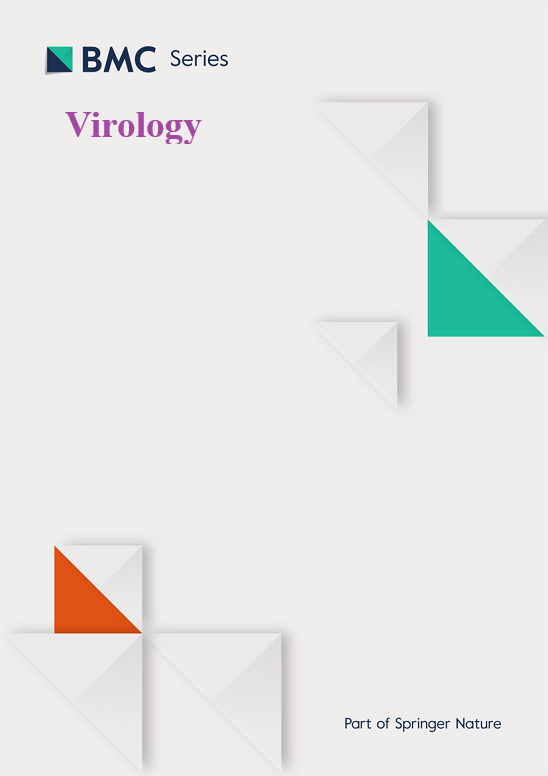SARS-CoV-2和乙型流感病毒在合并感染期间的干扰是通过诱导肺上皮中的特异性干扰素反应介导的
IF 2.8
3区 医学
Q3 VIROLOGY
引用次数: 0
摘要
自COVID-19大流行开始以来,严重急性呼吸综合征冠状病毒2 (SARS-CoV-2)和流感病毒的合并感染一直是一个主要的健康问题。新的SARS-CoV-2变体的持续传播和不断出现意味着与季节性呼吸道病毒的共循环和共感染将继续存在。尽管乙型流感病毒(IBV)感染对全球疾病负担有相当大的贡献,但其与SARS-CoV-2的相互作用在很大程度上仍未得到研究。在这项研究中,我们将代表性的SARS-CoV-2变体和IBV菌株依次共感染肺上皮细胞。我们发现,先前感染IBV会损害SARS-CoV-2 D614G、Delta和Omicron BA.1的复制,但不会影响最近的Omicron EG.5.1变体的复制。我们还发现,SARS-CoV-2预感染可减少流感减毒活疫苗(LAIV)的复制,这表明在合并感染中,携带SARS-CoV-2预感染的儿童中疫苗的有效性可能受到负面影响。SARS-CoV-2和IBV都诱导了强烈的III型干扰素(IFN)反应,而SARS-CoV-2诱导了IBV感染中未见的I型干扰素的产生,这表明病毒通过特异性IFN反应进行干扰。使用先天免疫反应抑制剂BX795和Ruxolitinib治疗可消除IBV和SARS-CoV-2合并感染时的病毒干扰,表明ifn刺激基因(ISG)反应在病毒干扰中起重要作用。更具体地说,我们发现ISG表达的量和时间,由原代感染病毒在顺序共感染中触发,促进了IBV和SARS-CoV-2之间的病毒干扰。本文章由计算机程序翻译,如有差异,请以英文原文为准。
Interference between SARS-CoV-2 and influenza B virus during coinfection is mediated by induction of specific interferon responses in the lung epithelium
Coinfections with severe acute respiratory syndrome coronavirus 2 (SARS-CoV-2) and influenza virus have represented a major health concern since the beginning of the COVID-19 pandemic. The continued spread and constant emergence of new SARS-CoV-2 variants mean that cocirculation and coinfection with seasonal respiratory viruses will continue. Despite the considerable contribution of influenza B virus (IBV) infections to global disease burdens, its interactions with SARS-CoV-2 remain largely unstudied. In this study, we sequentially coinfected lung epithelial cells with representative SARS-CoV-2 variants and IBV strains. We found that prior infection with IBV impaired SARS-CoV-2 D614G, Delta and Omicron BA.1 replication, but did not affect replication of the more recent Omicron EG.5.1 variant. We additionally show that pre-infection with SARS-CoV-2 reduces live attenuated influenza vaccine (LAIV) replication, suggesting vaccine effectiveness in children carrying SARS-CoV-2 pre-infections can be negatively impacted in coinfection. Both SARS-CoV-2 and IBV induced strong type III interferon (IFN) responses, whereas SARS-CoV-2 drove type I IFN production not seen in IBV infection, suggesting viral interference through specific IFN responses. Treatment with innate immune response inhibitors BX795 and Ruxolitinib abrogated viral interference between IBV and SARS-CoV-2 in coinfection, demonstrating that IFN-stimulated gene (ISG) responses play a vital role in viral interference. More specifically, we show that the magnitude and timing of ISG expression, triggered by the primary infecting virus in sequential coinfection, facilitates viral interference between IBV and SARS-CoV-2.
求助全文
通过发布文献求助,成功后即可免费获取论文全文。
去求助
来源期刊

Virology
医学-病毒学
CiteScore
6.00
自引率
0.00%
发文量
157
审稿时长
50 days
期刊介绍:
Launched in 1955, Virology is a broad and inclusive journal that welcomes submissions on all aspects of virology including plant, animal, microbial and human viruses. The journal publishes basic research as well as pre-clinical and clinical studies of vaccines, anti-viral drugs and their development, anti-viral therapies, and computational studies of virus infections. Any submission that is of broad interest to the community of virologists/vaccinologists and reporting scientifically accurate and valuable research will be considered for publication, including negative findings and multidisciplinary work.Virology is open to reviews, research manuscripts, short communication, registered reports as well as follow-up manuscripts.
 求助内容:
求助内容: 应助结果提醒方式:
应助结果提醒方式:


